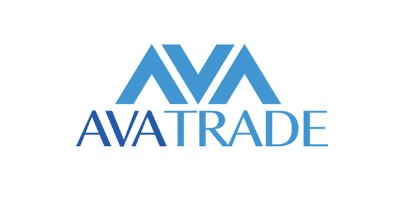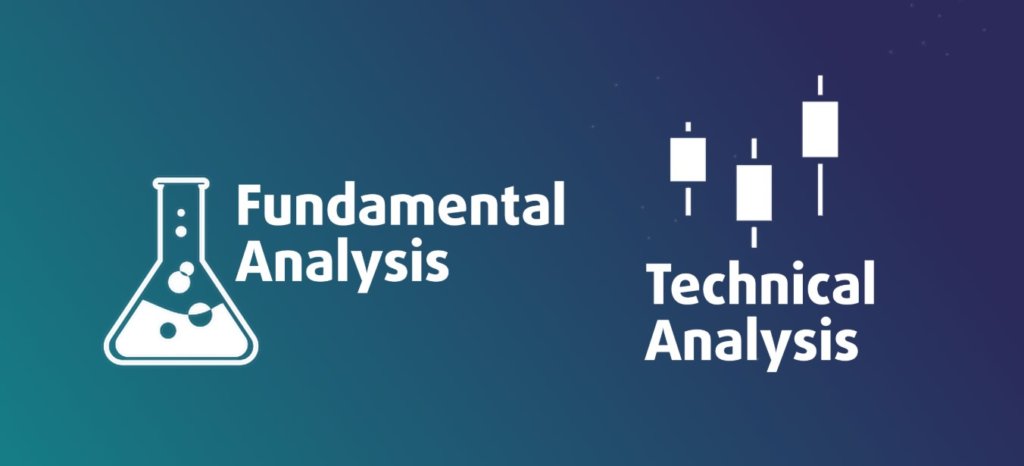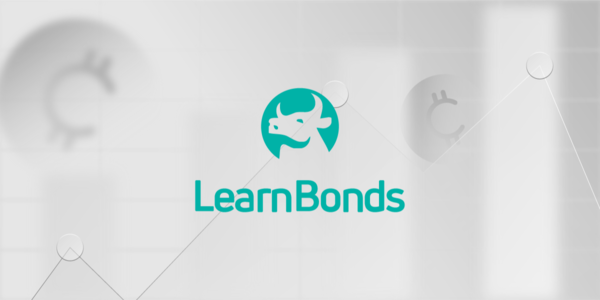Bitcoin Trading Philippines – A Beginner’s Guide
A few years ago, Bitcoin trading in the Philippines was strongly discouraged by the government. Recently, however, the government has changed its mind and begun actively encouraging the adoption of cryptocurrencies in the country. In doing so, it is tacitly encouraging adventurous Filipinos to get into Bitcoin trading.
The Securities and Exchange Commission (SEC) released regulations to protect Filipino cryptocurrency traders and reduce the risk of fraud. In addition, Bangko Sentral ng Pilipinas has begun registering and issuing licenses both to Filipino and foreign cryptocurrency exchanges to operate in the country.
Want to get in the action? This Bitcoin trading Philippines guide has everything we need to know. Our guide will help you learn how to trade Bitcoin, highlight some trading strategies and review some of the best Bitcoin trading platforms the Philippines!
-
- What Is Bitcoin And How Do You Trade It?
- How To Earn From Bitcoin Trading?
- Is Bitcoin Trading Available in the Philippines?
- What Regulations are in Place for Trading Bitcoin in the Philippines?
- What Risks are Involved with Bitcoin Trading in the Philippines?
- How Trading and Investing in Bitcoin Differ From Each Other
-
- What Is Bitcoin And How Do You Trade It?
- How To Earn From Bitcoin Trading?
- Is Bitcoin Trading Available in the Philippines?
- What Regulations are in Place for Trading Bitcoin in the Philippines?
- What Risks are Involved with Bitcoin Trading in the Philippines?
- How Trading and Investing in Bitcoin Differ From Each Other
How to Trade Bitcoin in the Philippines in 3 Quick Steps:
Don’t have time to read our guide in full? Follow the 3 quick steps outlined below to start trading bitcoin in the Philippines right now!
Step 1: Open a Bitcoin Trading Account
There are many bitcoin trading platforms that Filipino crypto traders can choose from. To help you identify the most secure and reliable platforms to trade Bitcoin in the Philippines, we’ve compiled a list of the best ones in the business.
1. Plus500 – Low Cost Bitcoin CFD Broker
Plus500 is a UK-based broker that was founded in 2008 and is now one of the leading cryptocurrency CFD brokers. This broker is renowned for its affordable pricing, as it does not charge trade commissions and the spreads for Bitcoin trading are very tight, which makes it a popular choice among Filippino Bitcoin traders. Plus500 also offers a Bitcoin-Ethereum trading blend that provides exposure to both cryptocurrencies.
This broker offers a user-friendly proprietary trading platform, with charting tools that come with price alerts and an economic calendar. However, more advanced traders may be disappointed by the fact that it doesn’t enable you to create custom technical studies.
The Plus500 standard trading account requires a £100 (6268 peso) minimum deposit t0 get started. If you want to try the platform for free or practice your Bitcoin trading strategy, you can use the free demo account. There is also an iOS and android app for mobile trading.
Plus500 is regulated by multiple leading bodies, which means client funds are segregated in separate accounts and all personal information is protected by encryption technology. Its parent company is also listed in the London stock exchange. All in all, that means you don’t have to worry about security when trading Bitcoin with this broker.

- Affordable: No commission & tight spreads
- Excellent Service: Reliable customer support
- Trustworthy: Regulated by multiple agencies
- Limited Platform: Minimal advanced research tools
80.5% of retail investor accounts lose money when trading CFDs with this provider.2. AvaTrade – Trade Bitcoin with Low Spreads
This well-established online broker accepts clients from a vast range of regions, including the Philippines. AvaTrade is regulated in many jurisdictions, including the UK, Australia and Canada, so it’s one of the most trustworthy options for Bitcoin trading in the Philippines.
One of the best things about this broker is that it offers very competitive pricing, with Bitcoin trading available with spreads as low as 0.45%. It also recently slashed cryptocurrency spreads by 50%, so it’s a very affordable platform. You can trade Bitcoin CFDs with 1:2 leverage on AvaTrade.
Getting started on AvaTrade requires an initial minimum deposit $100 (5012 peso). This platform doesn’t accept PayPal, but it does offer Neteller and Skrill. There is a free demo account that can help you practice Bitcoin trading and test your strategies before risking your money.
There are a range of trading platforms to choose from, including AvaTrade’s own proprietary platform, AvaTradeAct, along with MetaTrader 4 (MT4) and MetaTrader 5 (MT5). These offer a range of advanced trading tools, as well as other features like trading robots.
- Low Cost: Tight Bitcoin spreads
- Multiple Platforms: Proprietary, MT4 & MT5
- Muslim Friendly: Swap-free account
- Slow Withdrawals: Takes a few days to get funds
There is no guarantee you will make money with this provider.3. IG – Bitcoin CFDs Broker with Crypto 10 Index
Established all the way back in 1974, IG is one of the longest-standing and most reputable brokers in the business. This platform allows users to trade CFDs for Bitcoin and seven other popular cryptocurrencies.
IG doesn’t charge a commission for Bitcoin trading, and the spreads are tight, starting from 1 for cryptocurrencies. Another nice feature of this platform is that you can trade a custom Crypto 10 index that tracks the performance of the 10 top coins by market capitalization
IG offers a proprietary trading platform that is one of the best around and available for desktop, mobile, and web interfaces. It is fully customizable with user-friendly interface, and comes with an impressive charting package, as well as automated trading and streaming market coverage with analytics, alerts and signals. IG also offers trading via MetaTrader 4 and ProRealTime.
This broker has a slightly higher minimum deposit than others, standing at $300 (15034 peso), which you can make via credit/debit cards and PayPal. This broker is regulated by nearly every major regulatory agency in the world, and is publicly traded on the FTSE 250, so it’s a safe, secure and trustworthy Bitcoin trading platform.
- Risk Management: Offers tools to help your profit
- Excellent Design: Easy to use platform
- No Minimums: No minimum deposit for bank transfer
- Inactivity fee: Pay MYR 40 per month after two years without trades
There is no guarantee you will make money with this provider.4. Coins.ph: Philippines-Based Bitcoin Exchange
Coins.ph is slightly different from the other platforms on this list in that it’s a cryptocurrency exchange, rather than a broker. Licensed by the Bangko Sentral ng Pilipinas (BSP), Coins.ph is considered to be the largest online Bitcoin exchange in Southeast Asia.
It offers a simple app that will allow you to buy, sell and receive bitcoins with just a few taps, and you can also safely store them in the Coins.ph wallet. It is specifically designed for Filipinos and offers Bitcoin, Bitcoin Cash and Ethereum.
The best thing about Coins.ph is that it allows Filippino traders to convert Philippines peso directly into Bitcoin, meaning you can avoid the currency conversion fees that some overseas brokers charge. In terms of resources, there is a Bitcoin price chart that you can use to help inform your buying and selling.
For monthly deposits below 50,000 peso, you only need a cellphone or email address as proof of identity. As your deposits get larger, you will be asked for more proof, but small-scale trading can be virtually anonymous! Deposit fees will depend on the payment service you use. You can use 7-Eleven, M Lhuillier, GCash and Cebuana at no cost. You can also use Unionbank but you’ll need to pay a small fee. Withdrawal fees will also depend on the method you use. There are no withdrawal fees for banks in Metro Manila.
- Philippines Based: Convert peso into Bitcoin
- Trusted: Licensed by Bangko Sentral ng Pilipinas
- User-Friendly: Simple to use
- Limited: Far less trading options than at Bitcoin brokers
There is no guarantee you will make money with this provider.Step 2: Learn How the Bitcoin Market Works in the Philippines
What Is Bitcoin And How Do You Trade It?
Created in 2009, Bitcoin is a decentralized form of digital currency that aims to eliminate traditional intermediaries like banks when carrying out financial transactions.
It can be stored in a digital wallet and powered through peer-to-peer technology and software-driven cryptography. The open-source code that powers Bitcoin is known as the blockchain.
Each transaction made with Bitcoin is regarded as a block and each block creates a permanent record. Bitcoin miners independently confirm the transactions using powerful computers and are paid in Bitcoins for their efforts.
There are two main types of digital wallets that you can use to store Bitcoins: hot wallets and cold wallets. In a hot wallet, Bitcoins are stored in the cloud on a provider or trusted exchange and can be accessed through a web browser to facilitate trading. On the other hand, a cold wallet is an encrypted portable device like a hard drive that enables you to store your Bitcoins offline, sheltering them from hackers.
In 2017, the price of Bitcoin skyrocketed to almost Php1,000,000 ($20,000). Since then, a lot more Filipinos have become interested in crypto trading.
Are you curious about Bitcoin trading and eager to learn how it work in the Philippines? To start trading Bitcoin, you simply need to create an account with a reliable crypto exchange or bitcoin trading platform. Some of the features you should consider are the security of your funds, the fees and whether it accepts Filipino crypto traders.
How To Earn From Bitcoin Trading?
The high volatility of Bitcoin offers many opportunities to make money either through short-term trading or long-term investing.
If you are convinced of the inherent value of Bitcoin, your goal should be to buy and hold. Instead, if you simply want to profit from the volatility, Bitcoin will offer plenty of lucrative opportunities for short-term trades.
Bitcoin does not pay dividends or other income so you have to rely on the old adage of “buy low, sell high” (or “sell high, buy back low” if you want to short Bitcoin) to make profits.
Is Bitcoin Trading Available in the Philippines?
There are numerous ways you can trade Bitcoin in the Philipines. You can use licensed brokers, crypto exchanges, bitcoin trading sites, peer-to-peer (P2P) marketplaces, bitcoin ATMs and Abra’s services.
Moreover, a number of financial institutions and retail chains such as Cebuana Lhuiller and 7-Eleven have partnered with crypto exchanges to make it easy to buy Bitcoin.
The easiest way to buy Bitcoin in the Philippines is through one of our recommended brokers, as they allow you to purchase and/or trade BTC via your bank account, credit/debit card or PayPal. Many forex brokers now also offer Bitcoin trading.
Another popular way to buy BTC is through Bitcoin ATMs, which are regulated by the Bangko Sentral ng Pilipinas. However, since cryptocurrencies are relatively new in the Philippines, there are only a handful such ATMs in the country. You will find some in Metro Manila, one at Sunette Tower and the other at Unionbank’s Ark Makati branch. Note that each ATM has specific instructions, limits, fees and rules that you should check out before buying BTC.
What Regulations are in Place for Trading Bitcoin in the Philippines?
The Philippines offers the perfect environment to benefit from the cryptocurrency and Bitcoin revolution.
For example, around 10 million Filipinos live and work outside the country. Their collective cash remittances account for almost 10% of the total GDP of the Philippines. Every month an average Filipino sends home around $200, which is charged with 4% to 10 % transaction fee. However, with cryptocurrencies, the cost can be as low as 1%. This is the reason why the government legitimized cryptocurrencies as a remittance method.
Initially, through advisories and circulars, the Philippine government discouraged the use of digital currencies. Recently however, the government turned around and introduced new bills aimed at regulating the cryptocurrency industry so as to promote innovation and safeguard Filipino cryptocurrency traders.
The new regulations require virtual currency exchanges to register with the Philippines’ central bank known as the Bangko Sentral ng Pilipinas (BSP). These exchanges also have to follow the guidelines regarding the maintenance of records and make all the necessary submissions. Currently, there are over 34 licensed crypto exchange sites in the country.
Due to these favorable regulations, the Philippines have grown to become a major Bitcoin trading hub in Asia. According to Coins.ph, the biggest crypto exchange in Southeast Asia, 1 in every 10 adults in the Philippines uses Bitcoin.
What Risks are Involved with Bitcoin Trading in the Philippines?
Cryptocurrencies are essentially digital, which means they are susceptible to cyberattacks. For example, if your crypto wallet is hacked, there is no way to retrieve your lost Bitcoin, especially if you have forgotten or misplaced your keys. Some major crypto exchanges also have been hacked in the past, losing hundreds of millions of dollars’ worth of cryptocurrencies. Consequently, make sure to carefully research your chosen crypto exchange and wallet to get the best security for your crypto holdings.
In addition, the high volatility of Bitcoin implies that the value of your investments can greatly fluctuate within days or months. Further, Bitcoin has plunged during the recent financial markets meltdown following the coronavirus crisis, a sign that it is not isolated from the health of the global economy.
How Trading and Investing in Bitcoin Differ From Each Other
Although trading and investing in bitcoin are different, it is possible to be both a crypto trader and an investor at the same time.
Since both investing and trading have different aims, they follow different strategies. A major difference is the length of time that the crypto assets are held. Trading is associated with short to a medium-term commitment to assets while investing involves long-term commitments.
In most cases, investors seek to build profits gradually by holding assets for a longer period. This is commonly known as ‘holding’ in the crypto world. This strategy disregards most of the trends followed by traders, so even if the price drops, you will hold on your crypto assets and wait for the price to move up again.
Trading involves buying and selling Bitcoin in short periods of time, usually a few hours or a few days. The focus is not so much on the fundamental value as it is on the trends in the market and on short-term volatility. In most cases, traders tend to follow price charts and crypto-related news keenly. As a trader, you will have to conduct thorough analyses and rely heavily on instinct and judgement to execute the best trades.
Ultimately, although investing and trading are different, they can overlap in many ways. For example, you may be convinced of the fundamental value of Bitcoin but also realize that the price is too high and decide to exit your position and re-enter when the price makes more sense. While timing the market is extremely difficult, it is a way to remain focused on the long-term while opportunistically scoring short-term gains.
What Analysis Techniques can be used for Bitcoin Trading?
The cryptocurrency market is highly volatile, which means that a cryptocurrency’s value can go up and down quickly. In this context, a trading analysis strategy can help you learn to time the market better and avoid making costly mistakes.
Your trading analysis strategy should define what parameters you should consider before executing a potential trade. Below are some of the trading analysis strategies you can make use of.
Technical Analysis
Technical analysis is the study of statistical trends that relies on historical price and data to predict future market trends. There are various technical tools you can use to measure and interpret market behavior to identify opportunities for trade.
There are three main types of trends. In the uptrend, the asset is moving up, making higher highs and higher lows. In the downtrend, the asset is moving down and making lower highs and lower lows. The sideways trend shows the asset trading in a horizontal channel.
In most cases, traders will use the terms ‘bullish’ and ‘bearish’ when referring to a trend. The term ‘bearish’ means that prices going down. The term is derived from a bear, who strikes downward with its paws. On the other hand, bullish comes from a ‘bull’, who strikes up with its horns, indicating that prices are going high.
Note that the movement of prices is not linear, and it will face resistance while going up and support when moving down. Resistance is when the uptrend is expected to pause or rebound due to the concentration of sellers. Support is the point where the downtrend is expected to pause or rebound because of the concentration of buyers.
A broken resistance level tends to become a support level. Usually, support is used as an entry point while resistance as the exit. Remember that if there are strong trends, prices can go through both resistance and support without pausing or stopping.
Below are some of the common technical analysis tools used by expert Filipino cryptocurrency traders.
- Open High Close Low (OHLC) Charts
Candlesticks are the bars displayed on a chart. The shape and color of a candlestick depend on the opening and closing prices, and the day’s high and low.
A bullish candlestick can be green or white, and the close is above the opening. In contrast, a bearish candlestick can be red or black, and the close is below the opening.
- Simple Moving Average (SMA)
This is a type of moving averages that shows the average closing price over a specified period.
It is often used to determine the direction of a trend. If the small moving average is moving up, the trend is also moving up and vice versa. This tool is useful to observe longer-term trends, as you can plot moving averages over 10-days, 50-days and 100-days together to see how the markets are moving.
- Bollinger Bands
Bollinger bands illustrate a graphical band with an SMA in the middle. The width of the band indicates the volatility, which is the rate at which the price of an asset can go up or down.
Higher volatility shows that the value of an asset can fluctuate rapidly by big margins.
Fundamental Analysis
Fundamental analysis is a forecasting method that evaluates economic, financial and other important variables to determine a crypto asset’s intrinsic value. This is a bit different from the technical analysis that majorly focuses on price movement.
Because other assets such as stocks have been traded for a long time, there is a significant amount of data that makes fundamental analysis easier. However, Bitcoin trading is relatively new, and most cryptocurrencies or crypto companies don’t have earnings, revenues, profits or other metrics used to determine the value of crypto assets.
Consequently, fundamental analysis in cryptocurrency trading is done slightly differently, using alternative sources of information such as project websites, whitepaper, press and community channels.
Hybrid/Dynamic Analysis
Both fundamental and technical analysis can be used in cryptocurrency trading, though with some peculiarities. Before trying out Bitcoin trading in the Philippines or any investing in any other crypto asset, you should use fundamental analysis to determine whether you believe the coin is overpriced or has the potential for growth. Then, in addition to the fundamentals, technical indicators will help you to determine whether an asset is oversold or overbought in the short run.
This mix of both analyses will help you assess what you think the short- and medium-term price movements will be and define your trading strategy.
Step 3: Choose a Bitcoin Trading Strategy
There are numerous strategies you can use when trading Bitcoin in the Philippines. The best trading strategy should be perfectly aligned to your objectives, available capital and risk appetite.
Here are some of the most common strategies employed by Filipino Bitcoin traders:
Scalping
Scalping in cryptocurrency is a trading strategy where you monitor the price movement to take advantage of the price fluctuations to make small profits. It is a very popular strategy in the forex trading market that can be transferred to other large, liquid markets like Bitcoin.
In short, the idea is to closely monitor the trading volume to anticipate very short-term (minutes or seconds) price movements based on patters you have seen before. By placing many small orders throughout the day, backed by a stop-loss, the goal is to score a myriad of small gains and minimize the chance of large losses.
One important thing to consider when using this strategy is the trading and exchange fees involved. Since you will be making many back-to-back trades, remember that most brokers charge a small fee per trade. Consequently, it is imperative to have the risk capital to cover the trading fees.
Swing Trading
While day trading trades take place within a day, swing trading is performed over a longer period like a week or more. It aims to seize bigger gains over longer time frames than scalping and day trading, making it a better strategy for beginners.
With the swing trading strategy, you will only need to concentrate on the daily and weekly charts. To make the best out of it, you should use both fundamental and technical analysis to determine whether the crypto asset will experience a price swing or has enough momentum to pursue its current trend.
Holding
Also known as “hodling,” holding is a long-term strategy where you buy and hold your Bitcoin while ignoring short-term fluctuations. It involves investing in one-off or regular amounts of Bitcoin and holding the investment for an extended period or until another condition is met.
It is one of the easiest Bitcoin trading strategies to adopt because it requires less effort. It is founded on the assumption that BTC’s price will rise in value in the long run. The holding strategy ignores short-term price volatility, which is a common feature in the cryptocurrency market.
Bitcoin’s long-term volatility defies common trading logic. For example, from 2011 to 2013, its price rose by 52,000% but tanked by 80% in the following year. Even if the price falls significantly, if you believe in Bitcoin’s long-term value, you should still hold on to your crypto assets unless the fundamental changes.
Despite its simplicity, the most important thing you have to consider is the condition for pulling your money out of the long-term investment. How long will it take you to cash out? Is there a specific price point you have to meet? Note that your Bitcoin investment can go the other way too. If your trade goes south and you are not prepared to lose a significant amount of money in the short-term, then you should consider another strategy or set some pre-defined conditions to exit the market.
Holding is an ideal strategy if you don’t have the time or motivation to participate in the active crypto market. Also, it is the best approach to use if you are confident in your fundamental analysis and believe Bitcoin has long-term potential.
Bitcoin Breakout Strategy
Breakout is a trading strategy where you aim to enter the market as early as possible to take advantage of the price ‘breakout’ from the previous range.
It is based on the idea that once the market breaks through a major resistance or support level, volatility will begin. As a result, you will rely on these critical points to ride the trend from beginning to end.
To identify the resistance and support levels, you will have to use technical indicators such as RSI or MACD and volume levels like confirmation signals. Once you have recognized these levels, you can open a position.
Let’s say that BTC is currently trading within the range of $8500 to $8550. Your technical analysis indicates that it will break out into an upward trend after closing the $8550 price point. You should then place an entry order to open a long position if the price rises to $8551. If the price rises to this level, your trade will be executed, and you could ride the trend until your technical analysis suggests otherwise. Note that if the market price did not close the $8551 price level, your position would not be executed.
It is important to point out that not all breakout setups are profitable. Thus, the best thing to do is to spot breakouts that have a higher probability of leading to a major change in price. Some of the key factors that can increase the odds of a breakout setup include news catalysts and longer consolidation patterns.
Step 4: Create a Philippines Bitcoin Trading Account
Now you’ve reviewed the best Bitcoin brokers and have an understanding of the market, the next step is it sign up for a Philippines Bitcoin trading platform.
There are many options available and we recommend one of the brokers listed above.
Pros and Cons of Bitcoin Trading
Pros
- Greater liquidity than other cryptocurrencies– Since Bitcoin is the biggest digital currency by a significant margin, it has greater liquidity compared to other cryptocurrencies. This allows you to retain its value when converting to fiat currencies such as Philippine peso. It also ensures that the trading fees or spreads will be narrower than less liquid assets.
- Widely accepted as a payment method– In the Philippines, Bitcoin is becoming a widely accepted method of payment. In fact, some outlets will allow you to buy items using Bitcoin. This is the best option if you are looking for a safer and more affordable way to make and receive payments.
- International transactions are easier– It is very affordable to transact across international borders using Bitcoin. Unlike other methods like wire transfer, there are no transaction fees involved. This is why the use of cryptocurrencies is becoming a preferred remittance method by most Filipinos working abroad.
- Lower transaction costs– Compared to other digital payment methods like PayPal and credit cards, transaction costs involving Bitcoin are typically low. In most cases, it is uncommon for a Bitcoin transaction to cost more than 1% while other methods’ costs can be up to 3%.
Cons
- More exposed to scams and fraud– Bitcoin traders have experienced a lot of scams, frauds and attacks. In fact, some high-profile cryptocurrency exchanges have even been hacked before.
- Susceptible to high price volatility – Even though Bitcoin is the most liquid cryptocurrency, it is also susceptible to massive price changes over short periods.
Conclusion
Trading Bitcoin in the Philippines is easier than commonly believed. Right now, there are numerous trading platforms where you can buy and trade Bitcoin in the Philippines, but you find to make sure you understand the market and find the broker that’s best for you before you can get started.
FAQs
Is it possible to buy less than 1 Bitcoin?
Yes, it is possible. A single Bitcoin can be divided into 100,000,000 units, which means you can buy a small fraction of the coin.
Can I store Bitcoin on a cryptocurrency exchange?
Although it is possible to store your Bitcoin on an exchange, it is not advisable. This is because crypto exchanges are susceptible to hackers, and you will not be given private keys. Therefore, the best option is to find a reliable and safe Bitcoin wallet.
Do I need an ID to buy Bitcoin?
There are exchange platforms that will allow you to buy Bitcoin without going through a verification process. However, many of them are not unregulated.
What is the best and easiest way to buy Bitcoin in the Philippines?
The best way to buy Bitcoin is through a trusted broker. Most online brokers have easy to use platforms where you can purchase bitcoin using Philippines pesos. It’s highly recommended that you try Coins.ph once you are ready to buy Bitcoin.
How much do I need to start trading Bitcoin?
If you’re a newbie crypto trader, it’s highly recommended that you use first the free demo account provided by a cryptocurrency exchange platform. Once you are confident of your crypto trading skills, you can try trading by depositing around Php10,000.

Nica
Nica
View all posts by NicaNica specializes in financial technology and cryptocurrency. At her young age, she was already able to work with a Y Combinator-backed startup and another startup founded by Harvard graduates.
Latest News
WARNING: The content on this site should not be considered investment advice and we are not authorised to provide investment advice. Nothing on this website is an endorsement or recommendation of a particular trading strategy or investment decision. The information on this website is general in nature, so you must consider the information in light of your objectives, financial situation and needs. Investing is speculative. When investing your capital is at risk. This site is not intended for use in jurisdictions in which the trading or investments described are prohibited and should only be used by such persons and in such ways as are legally permitted. Your investment may not qualify for investor protection in your country or state of residence, so please conduct your own due diligence or obtain advice where necessary. This website is free for you to use but we may receive a commission from the companies we feature on this site.
Copyright © 2022 | Learnbonds.com
We use cookies to ensure that we give you the best experience on our website. If you continue to use this site we will assume that you are happy with it.Scroll Up




 Created in 2009, Bitcoin is a decentralized form of digital currency that aims to eliminate traditional intermediaries like banks when carrying out financial transactions.
Created in 2009, Bitcoin is a decentralized form of digital currency that aims to eliminate traditional intermediaries like banks when carrying out financial transactions. There are numerous ways you can trade Bitcoin in the Philipines. You can use licensed brokers, crypto exchanges, bitcoin trading sites, peer-to-peer (P2P) marketplaces, bitcoin ATMs and Abra’s services.
There are numerous ways you can trade Bitcoin in the Philipines. You can use licensed brokers, crypto exchanges, bitcoin trading sites, peer-to-peer (P2P) marketplaces, bitcoin ATMs and Abra’s services.

